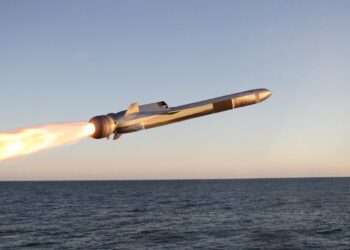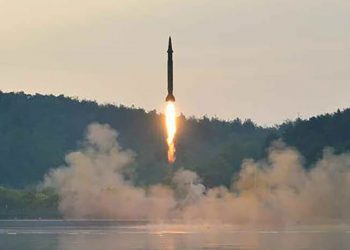Northrop Grumman, AZUSA: Northrop Grumman Corporation has announced the completion of mechanical and electrical integration work for a key element of the nation's next-generation missile warning system, the payload for the first Space-Based Infrared System (SBIRS) geosynchronous-orbit satellite. Northrop Grumman will provide the payload to Lockheed Martin, the prime contractor and systems integrator for SBIRS.
Electrical integration of the geosynchronous orbit (GEO-1) payload at Northrop Grumman's space systems facility in Azusa was followed by the integration of 100,000 lines of prototype flight software into the payload hardware. Following the hardware and software integration, the payload was successfully powered on, initialized and calibrated.
The payload subsequently completed an ambient functional test, which demonstrated critical payload functions including command and telemetry, infrared data connectivity to the on-board signal processing assembly, internal data bus messaging, scanner and starer mission modes, and downlink interfaces. The ambient functional test included execution of 19 separate test procedures, which enabled the checkout of the payload test equipment and payload test software.
“Completion of the ambient functional test activity in only two months will enable the GEO-1 satellite payload test program to move forward to the engineering thermal vacuum test phase,” said Sal Romano, vice president of the SBIRS High program at Northrop Grumman's Electronic Systems sector. “In that phase, these functional tests as well as radiometric tests will be repeated in a test-it-like-it-flies environment with the infrared sensors at their cryogenic operating temperatures.”
The company's SBIRS High GEO-1 payload features separate scanning and staring sensors. The scanning sensor is designed for continuous observation and surveillance of traditional intercontinental ballistic missile threats, while the staring sensor is designed to detect very low signature, short-burn-duration theatre missiles. The staring sensor recently completed its flight-acceptance test. Analysis of the test data showed that the staring sensor outperformed contractual requirements.
“This improves early missile detection at and just after launch,” said Romano. “This will ultimately enable warfighters to respond more quickly, thanks to more accurate and earlier tracking information including missile typing and better impact-point prediction.”
Lockheed Martin Space Systems, Sunnyvale, Calif., is developing the SBIRS program under contract to the U.S. Air Force Space and Missile Systems Center, Los Angeles Air Force Base, Calif. Air Force Space Command is responsible for operation of the SBIRS system.
When fully operational, SBIRS High will comprise two payloads in highly elliptical orbit, four satellites in geosynchronous orbit, as well as fixed and mobile ground-based assets to receive and process the infrared data. The team has delivered both HEO payloads and is on track to begin final integration and test later this year in preparation for launch aboard an Evolved Expendable Launch Vehicle in fiscal year 2008.
SBIRS High already is providing the nation enhanced worldwide missile-detection and tracking capabilities, battlefield data, and technical intelligence through its consolidated ground segment operations at Air Force Space Command, Buckley Air Force Base, Colo.
Northrop Grumman's Electronic Systems sector is providing the infrared payload, electronics and ground processing for the mission data processor as part of the Lockheed Martin Corporation-led SBIRS High team. The U.S. Air Force Space and Missile Systems Center manages the SBIRS High program, with Air Force Space Command responsible for the operation of the SBIRS system.
Headquartered in Baltimore, with key space sensor activities in Azusa, Calif., and Boulder and Colorado Springs, Colo., Northrop Grumman's Electronic Systems sector is a world leader in the design, development and manufacture of defense and commercial electronic systems, including airborne radars, navigation systems, electronic countermeasures, precision weapons, airspace management systems, communications systems, space sensors, marine and naval systems, government systems, and logistics services.
Britain, Germany jointly developing missiles: ministers
Britain and Germany are working together to develop strike missiles, their defence ministers said Thursday, as Russia's war rages in...









